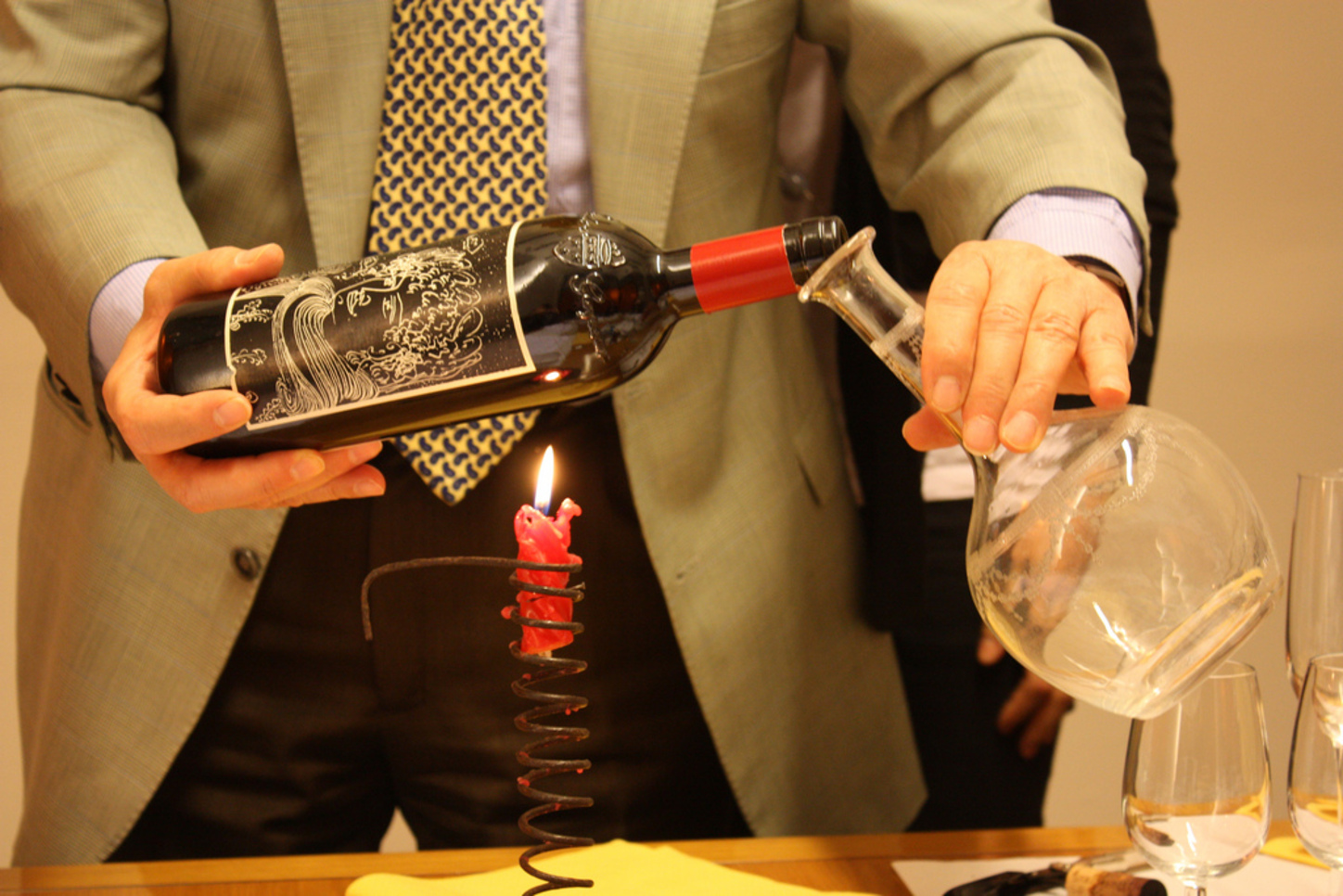
We’ve all seen a sommelier gently pouring a bottle of older wine into an elegant decanter and service from this fancy glassware, not the bottle. But why do they do this? And when is it appropriate?
There is one main reason to decant a wine and a secondary benefit that you might want to consider. The first is the from the technical definition of decant, which is to remove a liquid from a solid precipitate. In the case of red wine, over time, the tannins combine to form longer chain polymers and while this softens the harsher taste of the wine, it also drops out as a sediment at the bottom of the bottle. Decanting is used to get the wine out while leaving the sediment.
Most red wines are filtered before bottling, but some winemakers leave traces of yeast and bits of grapes in the wine, thinking it lends character. These elements will also drop out of solution over time. Decanting has the same effect on these particles as on the tannin polymers mentioned above.
The second reason to decant a wine is to give it some oxygen exposure and allow the wine to open and release any off-putting flavors. This is particularly useful for wines that are younger and still “tight” an hour or so of air exposure will cause the wines to soften and drink as though they are a bit older. You do have to be careful here as the air exposure allows the aromatics to volatilize and these are the very components that give the wine aroma and flavor – so don’t wait too long after decanting to drink up! This is particularly true for ancient red wines which are potentially at the end of the drinkable life and an hour in a decanter will close the drinkable window – these – you should drink up immediately.
Older red wines, perhaps with 15-20 years of age benefit the most from decanting as they will almost certainly have tannin polymers that can make the drinking experience unpleasant. No matter the age, if you can see sediment in the bottle, you should decant so your friends don’t get mud in their glass. What is interesting, is that younger reds and whites can benefit from the oxygen exposure that allows the wine to open and soften before drinking. So, when the sommelier asks if I want the wine decanted – I always answer yes – can’t hurt and it might help!
When trying to decant, you should gently handle the bottle perhaps even leaving on the side so the sediment doesn’t get stirred up and back into the wine. Have your glass pitcher or decanter clean and ready and the size and shape doesn’t matter. I’ve decanted into lovely iced tea pitchers with flowers on the sides as decoration. Gently open the wine, hopefully without disturbing the sediment. Once open slowly pour the wine into the decanter, looking for the sediment entering the neck of the bottle. Sommeliers will use a candle under the neck to better see the sediment, but I have found the flashlight on my phone to be an excellent option. Once the sediment starts to show, stop pouring. This leaves some wine in the bottle, but the wine in the decanter will be nice and clear.

I have seen some untrained waiters get a lovely decanter, gently open the wine and then proceed to turn the bottle upside-down and free pour the entire bottle into glass vessel. This defeated the entire purpose of decanting as the sediment was now nicely mixed into the wine and unlikely to settle out for a few hours.
When to decant? The answer is simple – old red wines – decant. Younger red and white wines – decant. And when in doubt – decant. It can’t hurt.

